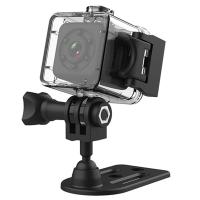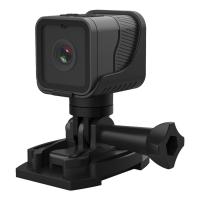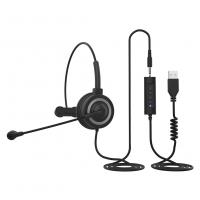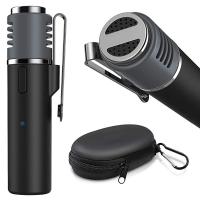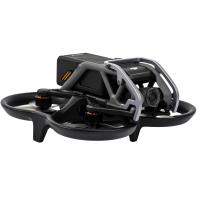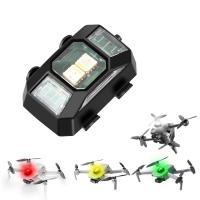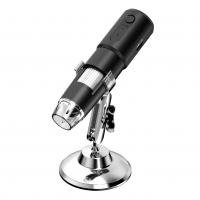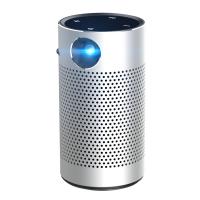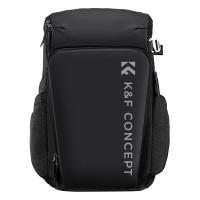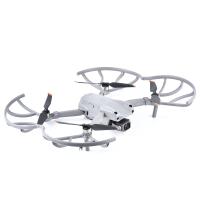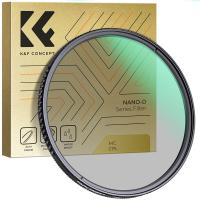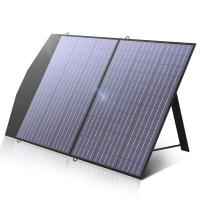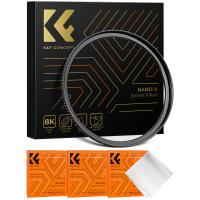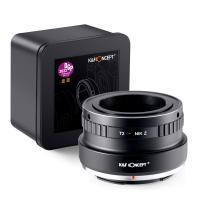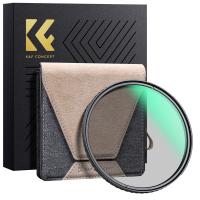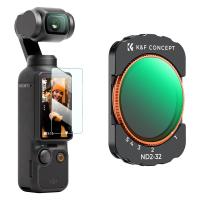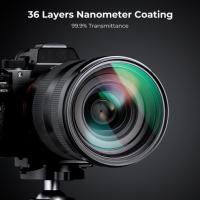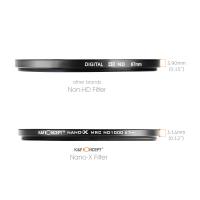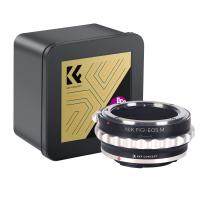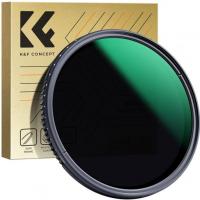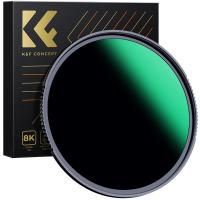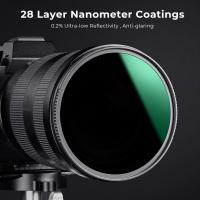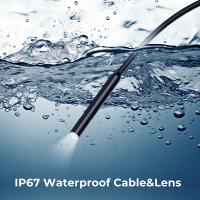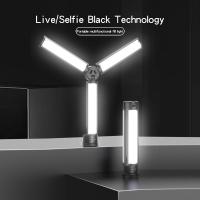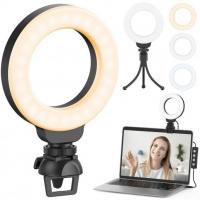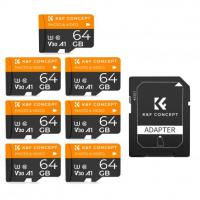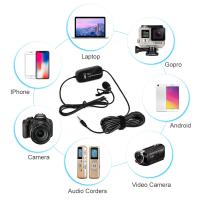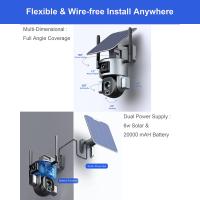How Does Built In Nd Filter Work?
Neutral Density (ND) filters are essential tools for photographers and videographers seeking creative control over their shots. While traditional screw-on or slot-in ND filters are widely used, built-in ND filters—integrated into the camera system—are a convenient and powerful feature, especially in professional-grade cameras. In this article, we'll explore how built-in ND filters work, their practical applications, and the advantages they bring to your creative endeavors.
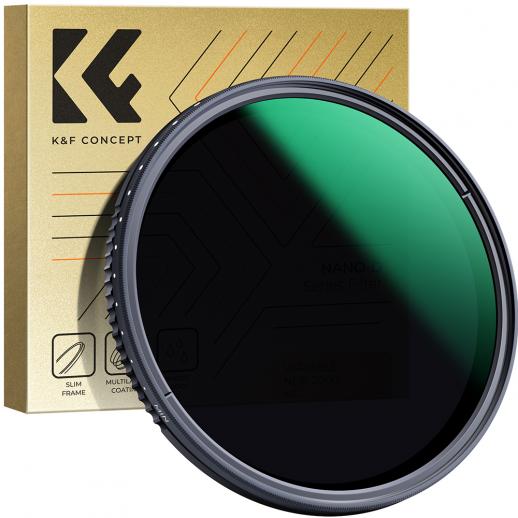
What is an ND Filter?
An ND filter reduces the amount of light entering a camera's sensor without affecting the color of the image. Think of it as sunglasses for your lens, allowing you to shoot in bright conditions or achieve specific effects like motion blur or shallow depth of field. ND filters are classified by their light-reducing strength, often denoted by ND values (e.g., ND2, ND4, ND8) or stops of light reduction.
Built-in ND filters take this concept further by integrating the filter mechanism directly into the camera body, offering ease of use and efficiency.
---
How Do Built-In ND Filters Work?
The mechanism of a built-in ND filter is more complex than it might seem. Here's a breakdown of its functionality:
1. Placement and Integration
Built-in ND filters are positioned internally, usually between the lens mount and the camera sensor. This integration eliminates the need for external filter attachments and ensures optimal alignment and functionality.
2. Mechanism of Operation
The operation of a built-in ND filter system typically involves:
- Electronic Actuation: In many cameras, the ND filter is controlled electronically. When activated, the filter slides or rotates into the optical path, effectively covering the sensor.
- Rotary or Sliding Mechanism: The filter may rotate (in variable ND systems) or slide in and out of position. These mechanisms are engineered to work seamlessly with the camera’s internal components, ensuring no light leaks or optical misalignment.
- Variable vs. Fixed ND Filters: Some cameras, especially high-end models, offer variable ND filters, allowing users to adjust the density level dynamically. Others provide a set number of fixed ND stops (e.g., 2-stop, 4-stop, 6-stop options).
3. Optical Quality
Manufacturers design built-in ND filters with high optical standards, ensuring minimal impact on image quality. Multi-coating technologies are applied to reduce reflections, maintain color neutrality, and prevent ghosting or flaring.
---
Applications of Built-In ND Filters
Built-in ND filters are invaluable in various scenarios where controlling light is critical. Here are some practical applications:
1. Shooting in Bright Conditions
Bright sunlight often results in overexposed images, especially when using wide apertures for shallow depth of field. A built-in ND filter reduces light intensity, enabling proper exposure without compromising your creative intent.
2. Achieving Motion Blur
In videography or long-exposure photography, motion blur is often used to convey movement or create artistic effects. For example:
- Capturing smooth water in landscape photography.
- Blurring traffic in urban scenes.
A built-in ND filter allows you to use slower shutter speeds in bright environments, achieving these effects without additional equipment.
3. Cinematic Video Recording
Video cameras often adhere to the 180-degree shutter rule, which maintains natural motion blur by setting the shutter speed at roughly double the frame rate. In bright conditions, achieving this balance requires an ND filter. Built-in ND systems enable seamless transitions between light conditions without interrupting the workflow.
4. High-Speed Sync with Flash
In flash photography, using a wide aperture often results in exceeding the camera’s maximum sync speed. An ND filter mitigates this by reducing light levels, enabling you to use flash creatively without overexposing the image.
5. Studio and Controlled Environments
Even in controlled lighting setups, ND filters help fine-tune exposure, especially when working with powerful studio lights or when simulating specific lighting effects.
---
Advantages of Built-In ND Filters
Built-in ND filters offer several advantages over traditional external filters:
1. Convenience
No more fumbling with screw-on filters or carrying multiple filter sizes. Built-in systems are ready to use at the push of a button, saving time and effort.
2. Enhanced Workflow
For videographers, transitioning between different lighting conditions is seamless. Switching ND levels is as simple as toggling a setting, eliminating the need to pause and adjust.
3. Compactness
Built-in ND filters reduce the need for external gear, making your camera setup more compact and lightweight—a significant advantage for run-and-gun shooting or travel photography.
4. Precision
Since built-in ND filters are specifically designed for the camera, they offer superior alignment and optical performance compared to external filters that may introduce slight inconsistencies.
5. Versatility
Advanced systems, especially those offering variable ND filters, provide a wide range of light control options, catering to diverse creative needs.
---
Limitations to Consider
While built-in ND filters are highly beneficial, they have some limitations:
- Camera-Specific: Not all cameras have built-in ND filters, and this feature is more common in professional video cameras or high-end hybrid cameras.
- Limited Strength: The range of built-in ND filters may not match the extensive options available in external filters. For instance, you might not find extreme ND values like ND1000 for solar photography.
- Higher Cost: Cameras with built-in ND systems are often more expensive due to the added technology.
---
Built-In ND Filters vs. External ND Filters
Choosing between built-in and external ND filters depends on your needs:
| Aspect | Built-In ND Filter | External ND Filter |
|-----------------------|--------------------------------------------------|-----------------------------------------------|
| Convenience | Integrated, no need for additional accessories. | Requires separate purchase and installation. |
| Portability | Reduces overall gear load. | Adds weight and bulk to your kit. |
| Flexibility | Limited to the camera's capabilities. | Wide range of densities and sizes available. |
| Cost | Higher initial camera cost. | More affordable entry point. |
| Creative Control | Excellent for fast-paced shooting. | Greater range for niche needs. |
---
Choosing a Camera with Built-In ND Filters
When selecting a camera with built-in ND filters, consider the following:
1. Your Workflow: Are you primarily a videographer or a photographer? Videographers often benefit more from this feature due to the dynamic nature of video recording.
2. Budget: Cameras with this feature are typically more expensive. Ensure it aligns with your budget and overall needs.
3. Shooting Conditions: If you frequently shoot in bright environments or require quick light adjustments, built-in ND filters can significantly enhance your efficiency.
---
Conclusion
Built-in ND filters are a game-changer for photographers and videographers seeking enhanced creative control and convenience. By reducing light intensity without affecting color balance, they allow for precise adjustments in various shooting scenarios. Whether you’re capturing cinematic videos, stunning long-exposure photos, or professional portraits, understanding how built-in ND filters work and their practical applications will empower you to achieve your creative vision with ease.
Investing in a camera with a built-in ND filter might seem like a luxury, but for many professionals, it becomes an indispensable part of their toolkit. As technology continues to evolve, built-in ND systems are likely to become more advanced and widespread, further cementing their role in modern imaging workflows.

